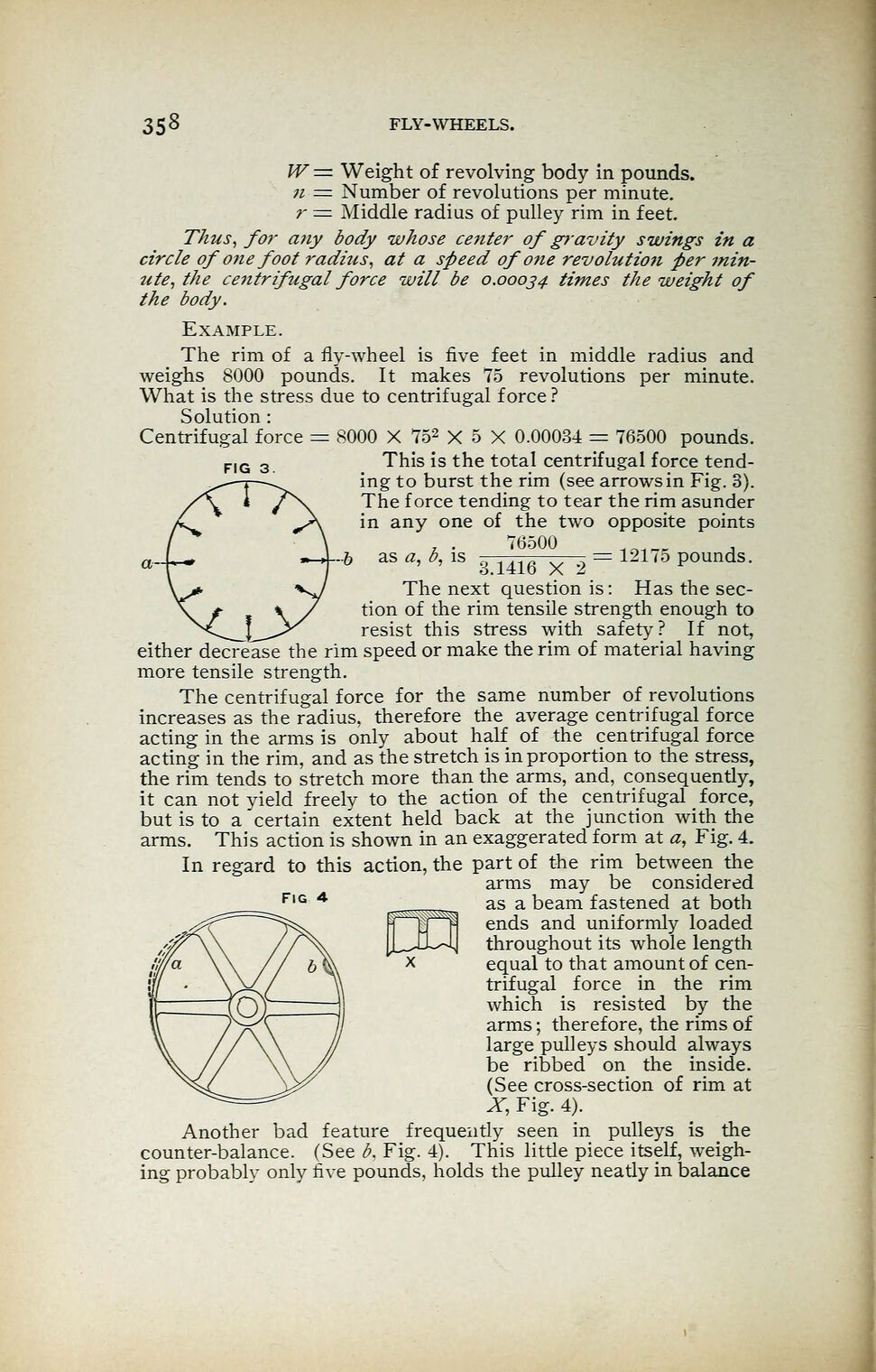
Full resolution (JPEG) - On this page / på denna sida - Fly Wheels - Centrifugal force in fly-wheel and pulleys

<< prev. page << föreg. sida << >> nästa sida >> next page >>
Below is the raw OCR text
from the above scanned image.
Do you see an error? Proofread the page now!
Här nedan syns maskintolkade texten från faksimilbilden ovan.
Ser du något fel? Korrekturläs sidan nu!
This page has never been proofread. / Denna sida har aldrig korrekturlästs.
35 8 FLY-WHEELS.
W= Weight of revolving body in pounds.
n = Number of revolutions per minute.
?- = Middle radius of pulley rim in feet.
Thus, for any body whose center of gravity swings in a
circle of one foot radius, at a speed of one revolution per min-
ute, the centrifugal force will be 0.00034 times the weight of
the body.
Example.
The rim of a fly-wheel is five feet in middle radius and
weighs 8000 pounds. It makes 75 revolutions per minute.
What is the stress due to centrifugal force ?
Solution :
Centrifugal force = 8000 X 752
X 5 X 0.00034 = 76500 pounds.
FIG 3 This is the total centrifugal force tend-
0ingto burst the rim (see arrows in Fig. 3).
The force tending to tear the rim asunder
in any one of the two opposite points
..& as a, b, is
8 ^ x £
= 12175 pounds.
The next question is : Has the sec-
tion of the rim tensile strength enough to
resist this stress with safety? If not,
either decrease the rim speed or make the rim of material having
more tensile strength.
The centrifugal force for the same number of revolutions
increases as the radius, therefore the average centrifugal force
acting in the arms is only about half of the centrifugal force
acting in the rim, and as the stretch is in proportion to the stress,
the rim tends to stretch more than the arms, and, consequently,
it can not yield freely to the action of the centrifugal force,
but is to a certain extent held back at the junction with the
arms. This action is shown in an exaggerated form at a, Fig. 4.
In regard to this action, the part of the rim between the
arms may be considered
F,G 4
______ as a beam fastened at both
ends and uniformly loaded
throughout its whole length
equal to that amount of cen-
trifugal force in the rim
which is resisted by the
arms ; therefore, the rims of
large pulleys should always
be ribbed on the inside.
(See cross-section of rim at
X, Fig. 4).
Another bad feature frequently seen in pulleys is the
counter-balance. (See b. Fig. 4). This little piece itself, weigh-
ing probably only five pounds, holds the pulley neatly in balance
<< prev. page << föreg. sida << >> nästa sida >> next page >>